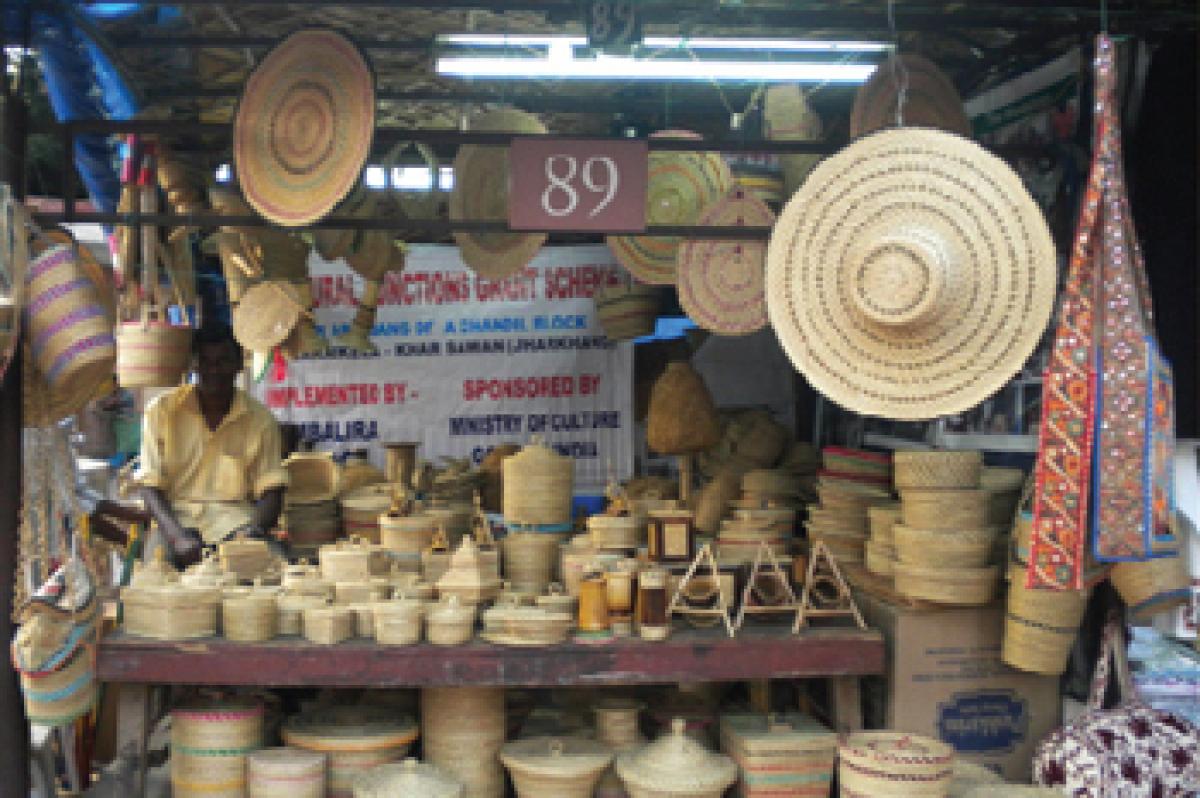Live
- Hyderabad to Tollywood via Hollywoood
- Tragic Road Accident in Karnataka Involving Students from Kurnool District
- Feroz Abbas calls performing ‘Pyar Kiya To Darna Kya' at Taj Mahal 'a tribute'
- Sreeleela sets the internet ablaze with mood-filled pictures
- Venezuela rejects US decision to put Cuba back on list of 'state sponsors of terrorism'
- Sports Min Mansukh Mandaviya felicitates Kho Kho World Cup-winning teams
- Resolution process of JC Mill in final stage, says CM Mohan Yadav
- New Zealand's annual inflation sees slower increase at 2.2 per cent
- HUDCO Approves Release of Rs 11,000 Crores for Amaravati Capital Construction
- Congress infighting leaves Karnataka unrepresented at Davos, says BJP
Just In

Appalled at the sight of the men folk of a primitive Jharkhand tribe lolling around in a drunken stupor while the women crafted a range of artifacts for which unfortunately there was no market, a woman bureaucrat took matters in hand and effected a social miracle of sorts, for which she is worshipped as a “Mother Goddess” in more than 25 villages of the area.
Appalled at the sight of the men folk of a primitive Jharkhand tribe lolling around in a drunken stupor while the women crafted a range of artifacts for which unfortunately there was no market, a woman bureaucrat took matters in hand and effected a social miracle of sorts, for which she is worshipped as a “Mother Goddess” in more than 25 villages of the area.
Suchitra Sinha, currently Jharkhand's tourism director, is worshipped as "Devi Maa" with her photograph occupying a prominent place among the other gods and goddesses in the prayer room of tribal homes."She is our Devi mother. We have not seen God but for us this mother has always stood by us," Manju, a Sabar tribe woman who resides in Samanpur village of Nimdih block, some 135 km from Ranchi, said.
It's not just the 250 families of Samanpur village but also those of Makula, Bhangad, Bindubeda, Biridudih, Chirubeda, Bereda and other villages where Suchitra is venerated. The reason for this lay in a huge hall behind the village school where large numbers of men and women were hard at work making artefacts and other items of daily use from forest produce.
Sinha had cleared the Bihar Public Service Commission examination in 1988 and was familiar with the underdeveloped area that was a hotbed of Maoist rebels as well from the time she was posted as Jamshedpur's deputy collector in 1990. However, her visit to Samanpur village in 1996 for attending an event was the turning point.
She took up the matter with the Deputy Development Commissioner (DDC), who, instead of hearing her out, suggested she concentrate on her official duties. Jeeringly, he said it was naive to believe that the villagers could be pulled out of the state of intoxication they lived in for most of the time. However, this did not deter Sinha and she made repeat visits to Samanpur village, speaking to the men to turn a new leaf, making the women realise their exceptional talent and soon earned their trust.
She later formed a self-help group named Amabalika and in groups of 10, the villagers were brought to New Delhi, where they were trained at the National Institute of Fashion Technology (NIFT). These villagers, in turn, trained others in their own villages and the rest, as they say, is history.
Her efforts translated into reality and soon the handicrafts started getting markets for themselves.
Sinha remains self-effacing, though. "Please do not highlight me but the problems of the primitive tribes who lack basic civic amenities. I will be happy if corporate houses adopt the villages and develop basic infrastructure to make it a craft village. I only wish that the Sabar tribe, who are on the verge of extinction, get economic benefits through their skills," Sinha said.

© 2025 Hyderabad Media House Limited/The Hans India. All rights reserved. Powered by hocalwire.com







